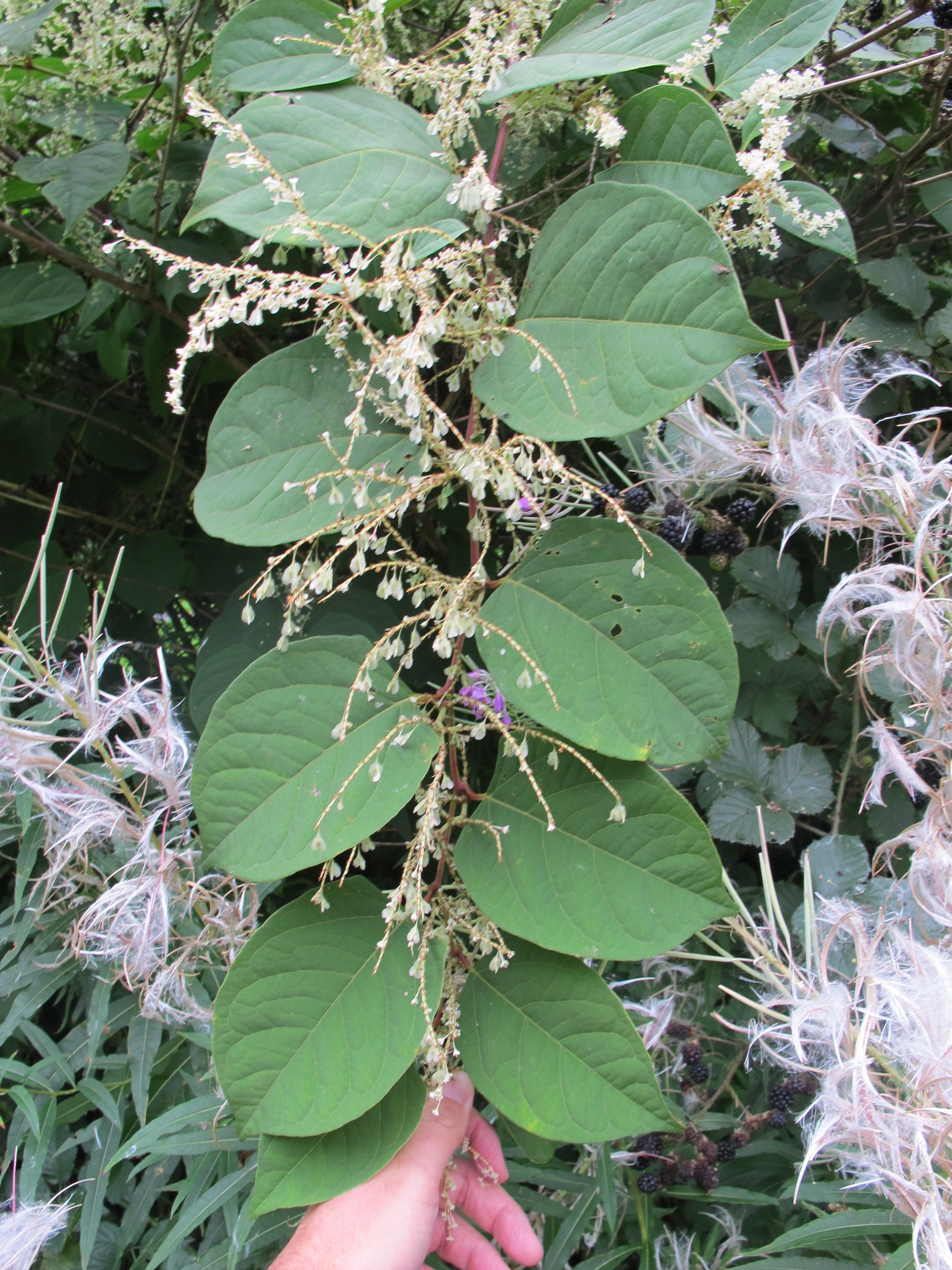Japanese Knotweed
Introduction
Reynoutria japonica var. japonica (previously Fallopia japonica).
Japanese Knotweed is an invasive, non-native species that was introduced into the UK by botanists at the end of the Victorian era. Japanese Knotweed alongside four other invasive knotweeds are Schedule 9 species on The Wildlife and Countryside Act 1981 (Variation of Schedule 9) (England and Wales) Order 2010. Under this act it is an offence to plant or cause to grow any plants listed in Schedule 9.
Description
The stems grow vigorously from mid to late May dominating areas and creating stands where it is the only species present. The dried stems from previous years are generally present. Fresh stems are green and red with a similar appearance to rhubarb and can grow in excess of two metres in height. The leaves have a stem, are oppositely arranged on the stem. Stems are hollow. Later in the season small creamy white flowers appear in the leaf axils.
Method Of Spread
Rhizomes (underground stems that are capable of producing the stems and roots of another plant) grow rapidly underground producing long white shoots at the tips which send up shoots to the surface. Disturbance increases the stem density and if the tops are cut it is important to dispose of them properly.
All Japanese Knotweed plants within the UK are female and all male plants are shown to be infertile hybrids. Japanese Knotweed has an incredible capacity to spread: as little as a 10mm2, 0.7g section of rhizome has the capacity to produce a whole new plant. The plant spreads vegetatively from stems, crown and rhizomes and has spread throughout the entire UK since its arrival here in 1854.
Methods Of Control
Cultural Methods Of Control
There are no effective methods of cultural control for Japanese Knotweed.
Chemical Methods Of Control
Professional Pesticides
Japanese Knotweed is susceptible to systemic herbicides, such as glyphosate and triclopyr. Glyphosate has been proven to be the best method of controlling this invasive species.
Chemical control is often the most cost-effective means of controlling Japanese Knotweed and refers to applying a professional herbicide over a period up to three years depending upon the infestation. The main consideration is the locality of the plant in relation to water. Consent is needed from the Environmental Agency if herbicides are to be sprayed near water. The only herbicide approved for application near water is glyphosate, the active ingredient in Roundup ProVantage and Roundup ProActive. Those applying professional herbicides require an application license. In situations near water it is advisable to use a method of application known as "stem injection". This method of application is labour intensive but minimises the herbicide coming into contact with other plants and is particularly effective later in the year when the plant is marshalling resources into its extensive rhizomes for the next year's growth.
Glyphosate is a non-selective (kills all plants that it touches), systemic herbicide that upon application is absorbed through the foliage and transported through the entire vascular system of the plant. It disrupts the processes whereby the plant can manufacture its own food and thereby effectively starves the plant to death. The ability of this chemical and its speed of operation is dependent on several factors:
- How large the root system of the plant is, these are its existing resources that enable it to produce new growth before it starves.
- The weather conditions dictate how quickly the plant is able to distribute the chemical around its system. The more actively the plant is growing, the more effective the herbicide will be.
- How much of the active ingredient is absorbed into the plant. This is dictated by the formulation of the product and the particle size e.g. a fine particle size will be easily absorbed through the leaf.
- The size and growth-stage of the target plant influence the effect of the herbicide. Spraying early in the year on established stands of Japanese Knotweed will have little effect because the volume of herbicide being applied as a ratio of the root system is relatively small. However, as this ratio alters the proportion of active ingredient increases leading to an increase in the amount of glyphosate absorbed by the plant.
Domestic Weed Killers
It is recommended that treatment of Japanese Knotweed is only undertaken by persons with appropriate skills and experience.
Biological Methods Of Control
There are not biological methods of control for Japanese Knotweed currently though research into suitable candidates is ongoing.
Anyone with knotweed on their land should take advice on the best control measures with reference to the Environment Agency's Code of Practice and Welsh Assembly Government's Technical Advice and continue to implement control measures as appropriate. Any delay will only allow the plant to establish more rhizomes (root systems) making it harder to control, whichever method is applied.

